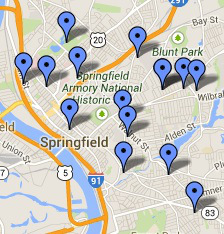The United Nations Office on Drugs and Crime has published a study of global homicide that should be required reading for everyone who has an interest in dealing with gun violence. The 100+-page report is breathtaking in its scope and detail, and is without doubt the most comprehensive study of its kind to ever see the light of day. When it comes to talking about crime, violence and guns I’m not usually comfortable with cross-country comparisons because there are so many historical, economic, cultural and social variables that constitute the makeup of any country so as to make comparisons between countries risky at best. But what stands out in this report is its methodology and its comprehensiveness to the point that its analysis and conclusions simply can’t be overlooked.
The report is based on hundreds of published and unpublished sources, as well as homicide data from both law enforcement agencies and public health organizations in just about every one of the 192 countries that comprise the U.N. I didn’t do an exact comparison, but a quick eyeball of the data appears to suggest that in countries where homicide data is available from both law enforcement agencies and public health organizations, that the latter number is more often higher than the former for reasons that the report does not make clear. The report also gives very comprehensive, global data on the percentage of homicides in each country that are committed using guns. And here is where a cross-national comparison needs to be made.
Of all the countries that furnished data on the types of weapons used in homicides, the data suggests that slightly more than 40% of worldwide homicides were committed using a gun. The United States, in this regard, contains roughly 2% of the world’s population but accounted for 4% of the world’s homicides, and has a gun-homicide rate in excess of 60%. In Europe, by contrast, the gun homicide rate is slightly above 20%. Last week, as I mentioned in a previous post, the Annals of Internal Medicine published a very important article covering research into suicide and homicide rates relative to access to guns. The authors found a very strong correlation between gun access and suicide, and a less strong but nevertheless noticeable link between homicides and guns.
I’ll burden you with only one link to the numerous research that has attempted to prove that there is not only a connection between our homicide rate and guns but the extent to which it is elevated because of easy access to guns. And this research invariably “proves” this point by comparing data between the United States and other Western countries, most of whom have much lower homicide rates and make it much more difficult to buy and certainly to carry guns. But in reading the U.N. report one statistic leaps off the page and makes me wonder whether this comparison means anything at all.
According to the U.N., Italy has homicide rate of 1 per 100,000, which is basically the average for Europe as a whole. By comparison, our homicide rate in this report is 5 times higher than Italy’s rate. On the other hand, the report states that 60% of our homicides are committed with guns, but in Italy the rate of homicides committed with guns is nearly 70%. As I said at the beginning of this post, it’s always difficult to make cross-country comparisons with any degree of certainty, but this comparison at least suggests that the correlation between homicide rates and access to guns may not be all that exact.
Don’t get me wrong; I’m not casting doubt on the research efforts or outcomes of my public health colleagues when it comes to explaining the danger of guns. I’m just impressed by the wealth of data assembled by the U.N. report and I only hope it gets wider attention here at home.



Recent Comments